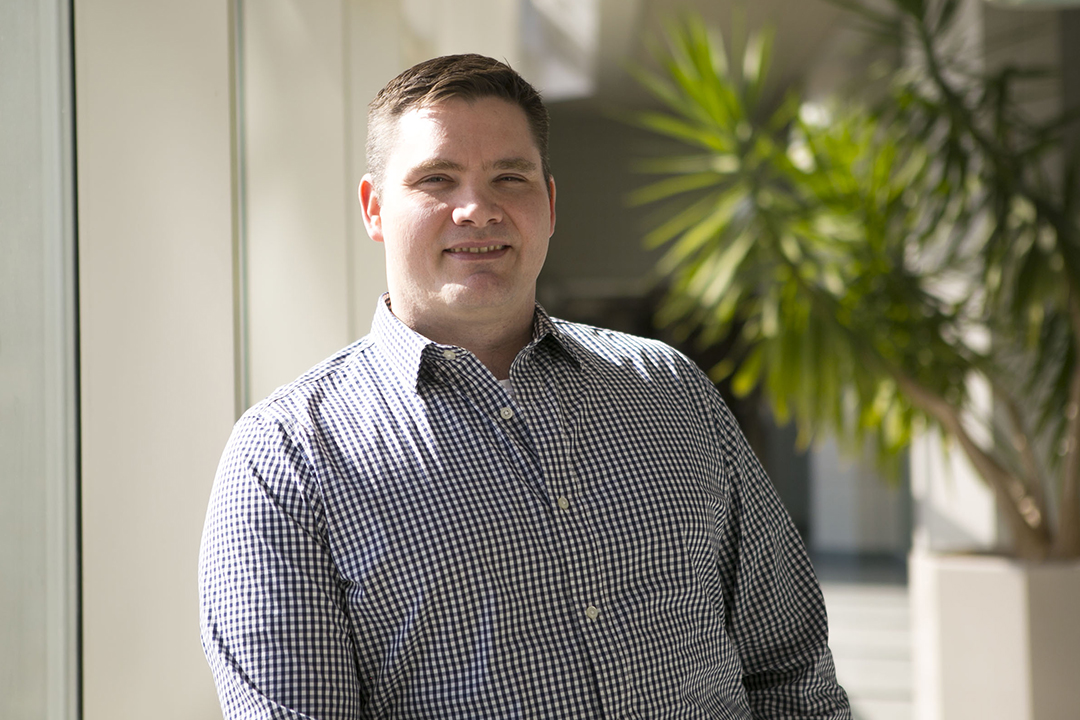
Rangeland ecologist's work a balancing act
It’s possible you’ve never heard of leafy spurge. But if you live in the Prairies, you’ve likely seen its lanky stalks and mustard-yellow buds standing out amongst the endless fields of green along the highway.
By HenryTye GlazebrookThis seemingly innocuous plant carries with it a menacing reputation. Leafy spurge is prone to rooting deep into ranchlands and snuffing out vitally important local flora in the process — an unwanted pest that’s unpalatable or even toxic to livestock and borderline impossible to eradicate.
“It goes in and it’ll dominate an area, or at least parts of an area, and then you’ll lose a lot of native species and there will not be nearly as much available forage for ranchers,” says Jonathan Bennett, an assistant professor at the University of Saskatchewan (U of S).
“You can go out and spray it with a herbicide, and that herbicide will stay there in the soil for five years and keep suppressing the plant for that amount of time. But what you’ll often find is that it just pops up on the edges of the area that you’re spraying.”
Bennett, a recent addition to the Department of Plant Sciences at the U of S College of Agriculture and Bioresources, has targeted leafy spurge through his work in plant community ecology. This area of study explores the complex relationships among different species of plants as well as between those plants and the people or animals that inhabit the same environment or rely on plants for food.
Aside from sweeping, potentially-catastrophic issues such as climate change or drought, Bennett says invasive species such as leafy spurge can be among the most substantive concerns faced by producers.
“These plants, once they get established, can have pretty tremendous impacts on how all of these plant systems function, and we really need better ways of controlling them,” he says. “If we can understand how these non-native plants interact with the species that are already there, we can use that knowledge to manage these systems a little bit better.”
Bennett has always been fascinated with the natural world. His interest in plant community ecology grew during his master’s work in insect ecology at the University of Windsor where he conducted research in tomato greenhouses. It’s where he also realized that to gain a fuller understanding of his six-legged subjects, he needed to learn all he could about the plant life on which they rely for habitat and sustenance.
“The health of those tomato plants, as well as the other plants we had in there, really determined how well the insects were doing,” Bennett says. “In the end, I felt like I couldn’t explain anything that was happening with the insects unless I could explain what was happening with the plants first.”
That important revelation took Bennett to the University of Alberta where he worked on grasslands plant communities at the Roy Berg Kinsella Research Ranch as the focus of his PhD degree.
Now that he’s connected with the U of S, Bennett is looking forward to working with the Livestock and Forage Centre of Excellence (LFCE), a unique complex of field laboratories that will model all aspects of raising livestock on the Prairies.
He describes one such project that he’s excited to begin with the LFCE: a long-term study exploring the dynamics of plant-soil interaction. The goal, Bennett says, would be to monitor a select few forage species over a decade or more, noting how soil disease develops and potentially discovering new ways of staving off disease in the process.
“What happens when you only grow one plant in a spot at a time is it tends to increase the disease in the soil — essentially there's no patch that’s not that plant, and it makes it easier for disease to get everywhere,” Bennett says.
“What I’d like to see is if we can develop ways of growing different forage plants together that minimizes disease presence in the soil or that we could rotate different species to accomplish the same goal.”
Bennett was quick to point out, however, that interactions with soil microorganisms can be good for the plant. “Mycorrhizal fungi, for example, are found in the roots of most plants. These fungi get sugars and fats from the plant, but in exchange, they help the plant increase nutrient uptake, tolerate drought and even resist disease.”
Even these relationships can be erratic, says Bennett. “Mycorrhizal fungi fulfil a lot of important functions in healthy soils, but some problematic invasive weeds like knapweed and leafy spurge can manipulate these associations to gain an advantage. This may be one of the reasons why these plants are so challenging in rangelands.”
It’s a complicated task, trying to balance interactions between living beings — regardless of whether they’re plant, animal or human — but it’s an idea that strikes at the heart of why Bennett finds his work so vitally important.
“What it really comes down to is being able to understand these complex systems and maybe being able to use that understanding to manage them more effectively and maintain biodiversity,” he says.
“If there’s anything we can’t make more of, it’s land. We can’t go out and create a new environment.”

